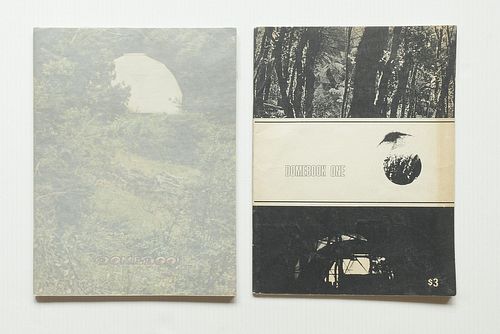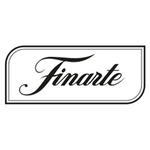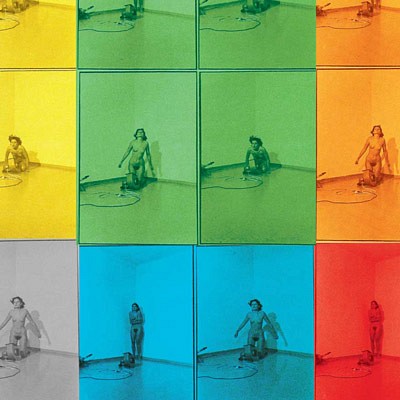Dome Book - Shelter<br><br>Domebook / Shelter (All published), Loa Gatos - Bolinas, Pacific Domes - Shelter Publications, 1970 - 1978, 4 volumes, cm.
About Seller
Via Sarpi 6
Milano
Italy
Finarte’s core business is the organization of public auctions of works of art and specialty items. Sellers, buyers and investors can rely on our experts for technical and financial advice on works of art, photography, design objects, jewelery, books, wines, vintage fashion and classic cars. In Marc...Read more
Two ways to bid:
- Leave a max absentee bid and the platform will bid on your behalf up to your maximum bid during the live auction.
- Bid live during the auction and your bids will be submitted real-time to the auctioneer.
Bid Increments
| Price | Bid Increment |
|---|---|
| EUR€0 | EUR€10 |
| EUR€200 | EUR€20 |
| EUR€400 | EUR€50 |
| EUR€1,000 | EUR€100 |
| EUR€2,000 | EUR€200 |
| EUR€5,000 | EUR€500 |
| EUR€10,000 | EUR€1,000 |
| EUR€50,000 | EUR€5,000 |
| EUR€100,000 | EUR€10,000 |
| EUR€200,000 | EUR€20,000 |
About Auction
Jul 16, 2020
100 years of original books and documents from 1914 to 2014 Finarte info@finarte.it
- Lot Description
Domebook / Shelter (All published), Loa Gatos - Bolinas, Pacific Domes - Shelter Publications, 1970 - 1978, 4 volumes, cm. 36.8x27.3 [files 1-2-3] and cm. 27,4x21 [file 4], paperback.
Director Lloyd Kahn. n. 1 - 1970 [Domebook one]: pp. 56, black and white cover by Jack Fulton, a booklet fully illustrated with drawings, plants, diagrams and photographic images of buildings and structures with geoteic domes (dome buildings), ecological and inflatable designed in the 1960s. Texts by Lloyd Kahn, Jay Baldwin, Kathleen Whitacre, Cappy McClure, Jonathan Kanter, Sarah Kahn, Robt. Easton and many others. Photographs by Peter Ross and Jack Fulton. Graphic design by Robt. Easton. n. 2 - 1971 [Dome book 2]: pp. 127- [1], color cover by Jack Fulton, booklet fully illustrated with drawings, plants, schemes and photographic images of spherical, dome buildings, ecological and inflatable. Texts by Lloyd Kahn, Peter Calthorpe, Jonathan Kanter, Hans Meyer, Sarah Kahn, Jeanine Easton, Sarah Brennon and many others. Photographs by Jack Fulton, Nancy Biers, Peter Ross, David Stephenson. n. 3 - 1973 [Shelter]: pp. 176, color cover, booklet fully illustrated with drawings, plants, schemes and photographic images of huts and stables in Central Asia, community houses and floating houses in Europe and the United States. Texts by Lloyd Kahn, Jaime de Angulo, Joe Bacon, Sarah Kahn, Jeannie Easton and many others. Photographs by Jack Fulton, Ed Allen, Greg Howell, Peter Ross and many others. Graphic design by Bob Baston. n. 4 - 1978 [Shelter II]: pp. 224, color cover, fully illustrated in color and black and white with drawings, plants, diagrams and photographic images of huts and stables in Africa and Southern Asia, rural buildings and bungalows in Europe and the United States. Texts by Lloyd Kahn, Bob Easton, Ian Davis, D. Stafford Woolard, Renee Kahn, Mixhael Gaspers and many others. Photographs by Jack Fulton, Regan Bice, Josep Mascarò, David Gebhard and many others. "Communes," Buddhist Economics ", the bricolage aesthetic of" adhocism "in the early 1970s," Digger "activism in San Francisco and Provo activism in Amsterdam, the production of" People's Parks' by community action and even the hippy trail to India represented a search for altrnatives th what Herbert Marcuse, in his influential early critique, called "technological rationality". All operated on a different scale to the grand, even revolutionary schemes to create utopia in the world. This trend reached its apogee in the commune movement that took hold throughout North America and Western Europe in the late 1960s. The partecipants in these experimental social coominities acted witha range of different motivations: some were guided by Kropotkin’s anarchism, whilist others were angaged in a search for transcendental experience (and both strains were combined in the "primitive" Christianity promoted by some American communes). Other communes indulged in "back to the land" romanticism, with a fascinated writer in "Life" magazine describing their members as "refugees from affluence". Many of these diverse groups expressed their antagonism to mainstream lifestyles by turning to unorthodox architectural forms (when judged by the standrads set by Western housing), including domes derived from Buckminster Fuller’s inventive futurism as well yurts and other traditional nomadic tents. " (David Crowley - Jan Pavitt, Cold War Modern Design 1945 - 1970, London, V & A. Publishing, 2008: pp. 260 with illustration of the cover of the first issue).
- Shipping Info
-
Upon written request of the Buyer, Finarte may arrange the packaging and shipment of the lot, on condition that the Buyer: (a) has fully paid the Total amount due; (b) provides Finarte with any certificate of free circulation or export licence or any statement and/or certification required for such purpose. Unless otherwise agreed with the Buyer: (a) packaging and shipment expenses shall be for the account of the Buyer, who may request, at least twenty-four (24) hours before the beginning of the auction, estimates of costs should the Buyer decide to entrust Finarte with the packaging and shipping of the lot; (b) the insurance coverage concerning any risk for (even partial) loss and/or damage caused to the lot during transport must be agreed between the Buyer and the carrier without any liability for Finarte; (c) the cost of insurance shall be for the account of the Buyer. The shipment and packaging of the lot to the Buyer shall be entirely at the risk and expenses of the Buyer and Finarte shall in no event be held liable for any action or omission of packaging workers or carriers.
-
- Buyer's Premium



 EUR
EUR CAD
CAD AUD
AUD GBP
GBP MXN
MXN HKD
HKD CNY
CNY MYR
MYR SEK
SEK SGD
SGD CHF
CHF THB
THB












